Snacking in Japan: A Journey Through the Most Beloved Treats
In Japan, it's common to snack throughout the day, perhaps because of the multitude of delightful snack options ranging from sweet to savory. With a constant array of snacks being released by popular companies, new flavors consistently appear on shelves throughout the month. Some of the best Japanese snacks include seasonal flavors or ingredients sourced locally or regionally, providing unique flavors for consumers not typically found outside the country.
Popular snacks in Japan include options like matcha-flavored Japanese Kit Kats and potato chips featuring a barrage of sweet and savory flavors (like honey butter). Below, we explore the exciting variety of Japanese snacks, including some of the most beloved traditional and modern treats.
The Rich Heritage of Japanese Snacking
Snacking has had its place in Japan for thousands of years, originally beginning about 2000 years ago with the creation of dagashi, a cheap candy that is meant to be able to fit any kid's allowance. This candy was inspired by wagashi, a dessert made from fruits, nuts, and mochi that was typically pricier.
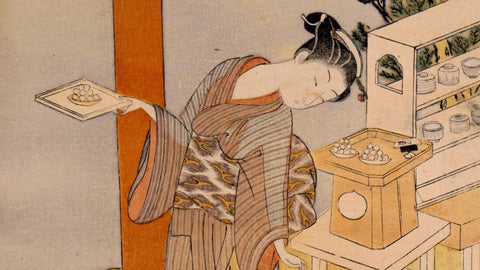
To solve this, dagashi was crafted from readily available (and simple) ingredients such as grains and syrup. This allowed the "penny candy," aka dagashi, to be kept at a low price. Unsurprisingly, dagashi has remained popular among children partially due to its vibrant, fun packaging but also because of its affordable price.
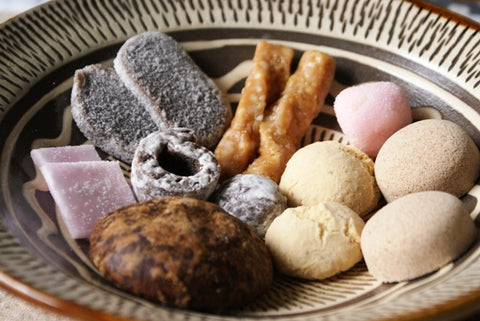
During the Meiji period, Japan saw modernization in multiple aspects, including the snack industry. This period offered a boom in the snack department, as many exciting new flavors and snacks were invented. Most modern popular snacks in Japan were first crafted during this time.
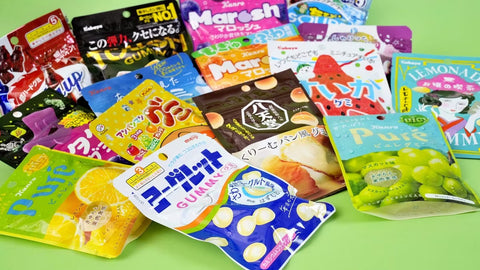
Around the same time as dagashi was invented, a more savory snack also began appearing in Japan—senbei. These Japanese rice crackers were created in the Edo period and inspired by a Chinese crepe that existed in the Tang Dynasty. Initially appearing in the Japanese town of Soka, it is said that senbei first appeared at a tea house due to excess dango dumplings.
To avoid waste, the owner of the teahouse (named Onsen) decided to flatten and roast the leftover dumplings. Thus creating a deliciously crunchy snack that was portable. These traditional Japanese treats quickly became popular in Japan, spreading throughout the country like wildfire. Now, senbei are available in various flavors, from the typical sweet, soy sauce-flavored snack to sweet rice crackers, which feature flavors like Sakura and strawberry.
The Modern Evolution of Snacks in Japan
Through Japan modernizing its snack options in the Meiji Period, it has continued to shell out an abundance of flavors and new snacks every few weeks. An additional factor in the variety of flavors and snack offerings is the increase in ingredients, foods, and snacks received from the United States in particular.
These ingredients began arriving during and after World War II and have become a staple in many Japanese snacks. For example, it's common to see milk powder and potatoes in sweet/savory treats; these are two ingredients that Americans introduced to the Japanese.

Modernization of snacking in Japan has also led to creative options, such as restaurant-worthy instant noodles soups, microwaveable noodle dishes, portable cakes in cans, and layered Turtle chips, which provide extra crunch in each bite. Creativity in the snacking world does not always need to be a completely new invention. It can also be creative flavor combinations, which are also present in Japanese snacks. For example, there are Japanese Kit Kat flavors like wasabi and Japanese sake, two flavors you would likely not find in other countries.
Though Japan is known as a forerunner for creative snacks, manufacturers have no qualms about fusing traditional and modern characteristics to create the best Japanese snacks. For example, many Japanese Kit Kats feature traditional flavors such as green tea or Sakura. Vice versa, it's also common to see traditional treats such as mochi with more adventurous flavors, including chocolate, fig, and chestnuts.
Top 10 Must-Try Japanese Snacks
While there are quite a few popular Japanese snacks ranging from sweet to savory, a few stand-out options should be consumed at least once in your life. These delicious Japanese snacks include traditional and modern favorites for the comprehensive list of must-try options. From caramel-flavored corn puffs to salt potato chips, there will surely be an option that meets everyone's taste preferences.
Traditional Japanese Snacks
Some of the best Japanese snacks have been in circulation for centuries. This section of the list delves into storied, popular snacks in Japan, which continue to be important to Japanese cuisine and culture.
Mochi
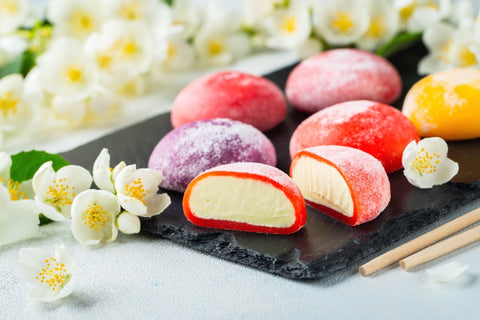
These traditional Japanese snacks are perhaps one of the most famous. With various options, including sweet and savory choices, mochi is often connected to Japanese holidays. During occasions like Japanese New Year, reunions, graduations, and other exciting events, this chewy treat will be served to guests. Made with glutinous rice flour, mochi is pillowy, soft, and subtle in flavor, making it the perfect base for various sauces, seasonings, and flavoring. It's commonly seen in vibrant colors that represent the flavor of the mochi, such as pink for strawberry.
Dorayaki

Another traditional sweet treat, dorayaki provides a unique experience to anyone who indulges in this treat. It's made with two soft pancakes filled with sweet red bean paste. It's common to enjoy this dessert during festivals or as a sweet breakfast/snack during the day. While it's traditionally made with an adzuki (red bean paste) filling, it can include other fillings such as sweet potato or chocolate.
Taiyaki
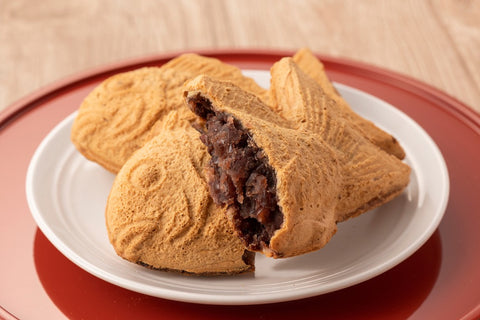
Perhaps one of the cutest traditional Japanese snacks, taiyaki, is a delicious cake shaped like a fish. It's typically filled with a paste or cream center, providing a crispy yet creamy consistency. These fish are usually made with pancake or waffle batter. Traditionally, the filling is made with red bean paste. However, other fillings are often available, including sweet potato, custard, and chocolate. This is another traditional snack that is often seen at festivals.
Dagashi

As the first candy in Japan, dagashi holds a special place in the hearts of adults and children. While the original version was made with malt syrup and grains, the flavors have greatly expanded over the years. These sweets now include options such as Ramune soda sweets in wax bottles, caramel cubes, popping candy, and more. Each candy is typically between 10 yen and 100 yen and can be found at local Japanese snack shops.
Takoyaki

This snack differs slightly from the other options, as it's usually sold and consumed hot. Takoyaki consists of rounded wheat flour batter balls with octopus, pickled ginger, tempura bits, and sliced green onions. Often, this snack is served with sauces drizzled on top, making this a flavorful, more filling treat. You can find this savory treat at summer festival food stalls in Japan, particularly in larger cities.
Senbei
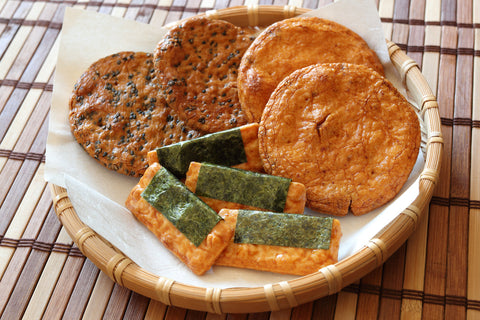
As mentioned, senbei (rice crackers) have a long history in Japan. As one of the first savory snacks, these crackers remain relevant today. These snacks have become so intertwined with Japanese culture, that they are considered a casual snack which is commonly consumed alongside a cup of green tea. Senbei is available in varying flavors, sizes, and colors.
Modern Japanese Snacks
With younger and older generations alike, modern Japanese snacks remain a delight throughout the day. Below are a few examples of newer snacks that fly off the shelves in Japanese convenience stores and markets.
Chips

With the ever-evolving array of chips flavors from brands like Calbee and Jagariko, it's easy to see why this is one of the best Japanese snacks available. These chip brands typically use real potatoes as an ingredient, then fry or bake them to crispy perfection. Flavor options include exciting choices such as pizza, BBQ, chicken soup, and more. The large number of flavors, along with the consistent increase in flavors, provides an exciting snack.
Cake

Deliciously moist, soft cakes are a Japanese specialty. From muji baumkuchen, a sweet cake that conveniently fits in one hand for on-the-go snacking, to Tokyo Banana, sponge cakes filled with delectable banana cream, Japan has quite a selection of snack cakes. These delicious cakes are often purchased on trips to Japan to bring as gifts for loved ones in other countries.
Biscuits

These crispy, buttery biscuits are deliciously accented with creamy chocolate toppings and fillings, depending on the type of biscuit snack. Popular options in this category include Pocky, Hello Panda, and Koala March. Each of these treats is popular among children or consumed as a nostalgic treat for adults.
Gummy and Candies

Japan is famous for its gummies and chewy candies, providing customers with unique options like Hi-Chew. These candies range in levels of chewiness but often incorporate juicy fruit flavors, which help differentiate them from gummies and candies in other countries.
The Local Love for Snacking: What Makes Japanese Snacks Stand Out
Japanese snacks are not only popular among Japanese people but have also garnered attention worldwide. These snacks are beloved for their variety and unique flavors, which consistently shift depending on the season. For those living in Japan, many traditional snacks are nostalgic, holding a special place in their hearts (and bellies). International fans particularly enjoy the creativity, quality, and exciting flavors of the snacks, characteristics that are challenging to find in snacks from other countries.
Snacks in Japan also provide insight into Japanese culture through storytelling. For example, many of the traditional snack offerings have unknown/unconfirmed originations. Thus, the stories behind snacks often relate to legends, myths, gods, and other culturally relevant topics/characters. Often, these stories include interesting character arcs and motivations, which provide a unique aspect to the enjoyment of the snacks.
With the opportunity to purchase traditional Japanese snacks, which have been perfected over thousands of years, and newly created items that turn the snacking world on its head, Japan reigns supreme in the world of snacks.
Conclusion
Since the inception of snacks in Japan, the country has ceased to amaze with its variety and uniqueness. From traditional treats to modern snack feats, Japan's snack offerings continue to impress local and international snackers. With options featuring complex flavor notes that provide delectable combinations of sweet, savory, and umami, the best Japanese snacks mentioned above are sure to satisfy any cravings.
Luckily, you won't have to travel to Japan to indulge in these delights. Sugoi Mart's Candy & Snacks Collection features these popular snacks in Japan and then some. With a delightful array of candies, chocolate, gummies, jellies, chips, tarts, and more, you'll find everything you need for a satisfying snack time.
Head to Sugoi Mart now to purchase your favorite Japanese snacks to bring a piece of Japanese culture to your home (and to keep your tastebuds on their feet!).
Author Bio


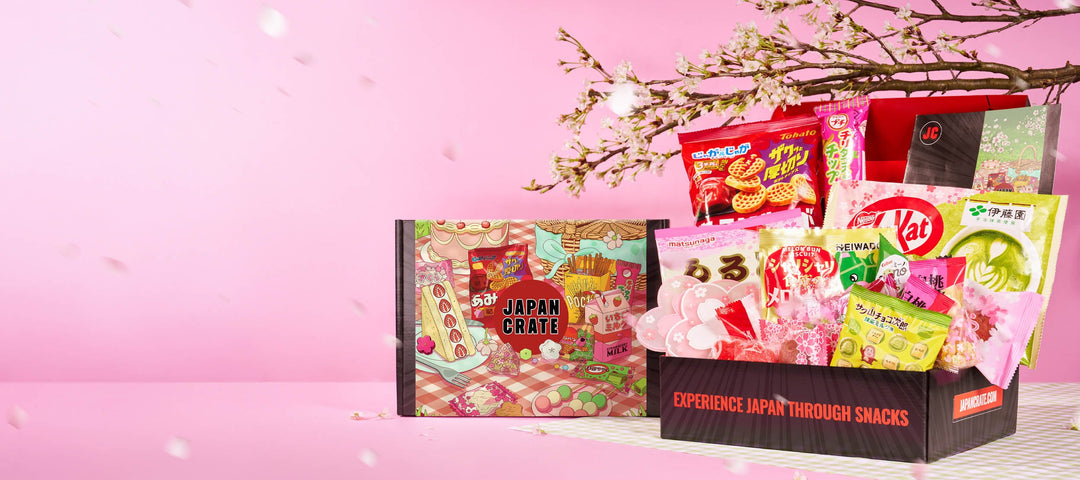




Leave a comment